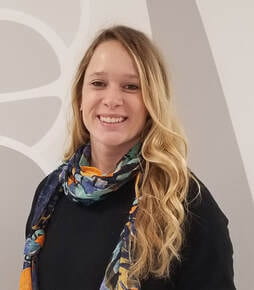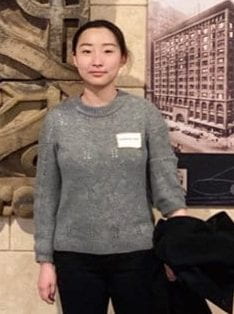Contributed by Dana Shaw, PhD and Jiameng Sun
After almost two years since the last in-person inaugural Joint Retreat and one year since we joined for the second annual Joint Retreat over Zoom, the third annual Joint Retreat featuring the department of Developmental Biology (DB); the Developmental, Regenerative, and Stem Cell Biology (DRSCB) graduate program, and the Center of Regenerative Medicine (CRM) was held Tuesday, September 28th at the River Camp at the St. Louis Zoo. The day began with a welcome by Dr. Aaron Johnson and a recap of how far our departments have come since this time last year in the pandemic by Dr. Lila Solnica-Krezel. The second year DRSCB students emceed the talks, which were given by graduate students, postdocs, instructors, and assistant professors. Not only were the featured speakers from diverse career stages, but talks also featured diverse subject matter, including descriptions of advanced computational, genetic, histological, and functional techniques in many different models and model organisms, ranging from human cells to mice to nematodes to zebrafish. Some of the vibrant talks included instructors Drs. Yongjun Yin and Stephen Stone from the Ornitz lab and Dr. Spencer Willet from the McNeill lab. Assistant professors also added to the breadth of science displayed at the retreat with talks from Dr. Didier Hodzic and new member to the DB department Dr. Tony Tsai. Talks were followed by a lively poster session outdoors on the Zoo grounds.
Graduate Student Spotlight
Five students presented during the first session of the retreat. The first student talk was given by Ruijun He from the Lavine lab focusing on the role of CCR2- macrophages in heart disease using an in vivo model for drug delivery to the heart. This was followed by a talk from Julia Whittle from the Gurnett lab on investigating human MYH3-associated distal arthrogryposis by mutating zebrafish smyhc1 gene, and the successful rescue of the phenotype by treating with para-aminoblebbistatin. Joseph Lin from the Apte lab gave a short talk on the discovery by scRNA-seq of novel cell populations found in a murine model of dry eye disease. The last presenter in the first session was Jamison Leid from the Lavine lab focusing on the heart failure phenotype found in cora zebrafishembryos and linking this phenotype to the taf5 gene. The second session began with a talk from Maple Adkins-Threats from the Mills lab about the differentiation process of parietal cells from stem cells and the recovery of parietal cells after ablation. Eva Kramer from Kaufman lab gave a short talk the opposing effects of sox10 and sox9b in the initiation of melanoma in zebrafish. Then Garret Easson from Tang lab showed his work on the intervertebral disc organ culture and the induction of glycosaminoglycan production by activating TRPV4. In session three, our last student speaker Shivani Aryal from Yoo lab presented her work on the X-linked Dystonia Parkinsonism in patient-derived medium spiny neurons. The quality of science on display during our graduate student talks made clear the future of our departments and Washington University Medical School as a whole is very promising.
Postdoc Spotlight
Session one began with postdoc Dr. Blerta Stringa from the Solnica-Krezel lab with a talk focused on using functional and computational approaches exploring gene regulation in the axial mesoderm during zebrafish gastrulation. During session two, postdoc Dr. Zev Greenberg from the Schuettpelz lab presented on his work investigating the role of CD53 in regulating hematopoietic stem cell quiescence. CRM trainee Dr. Rowan Karvas from the Theunissen lab followed with a talk on her work using trophoblast stem cell-derived 3D organoids as a model to explore placental development and susceptibility to viruses. The final postdoc presentation in session two was by Dr. Hajime Kashima from the Rubin lab who presented on the role of transcription factor Plagl2 in a colon cancer mouse model. Postdoc Dr. Adelita Mendoza from the Kornfeld lab began the final session of talks describing how zinc is trafficked by lysosomes in C. elegans. This was followed by postdoc Dr. Gareth Chapman from the Kroll lab with his talk on the role of CHD2 in regulating the differentiation of neural progenitors. From the Corbo lab, postdoc Dr. Yohei Ogawa was the last postdoc to present a talk summarizing his work on exploring the diversity of photoreceptors in the zebrafish retina. The diverse scientific expertise on display by our postdocs at the retreat demonstrated why Washington University remains a top research institution.
We would like to extend a special thank you to all the presenters for helping to make this retreat a success and to the retreat organizers for all their hard work on planning this first in person retreat since the pandemic! We also look forward to the next in person retreat, in which we hope to return to Pere Marquette Lodge and Conference Center in Grafton, IL in 2022.

